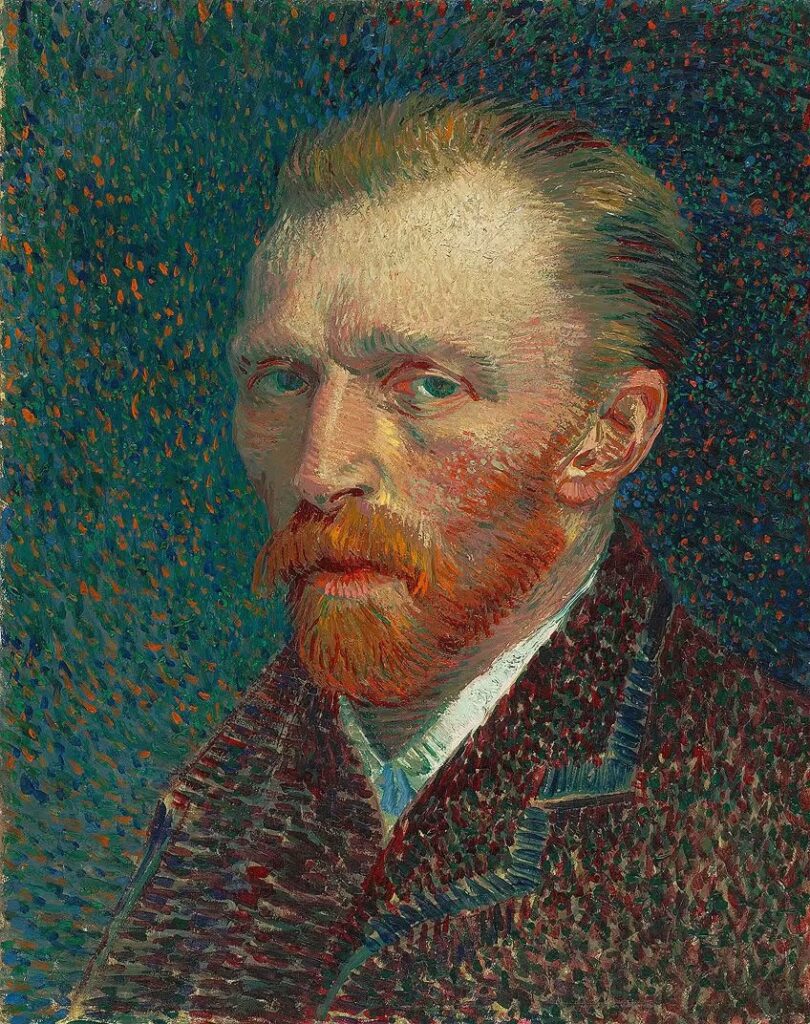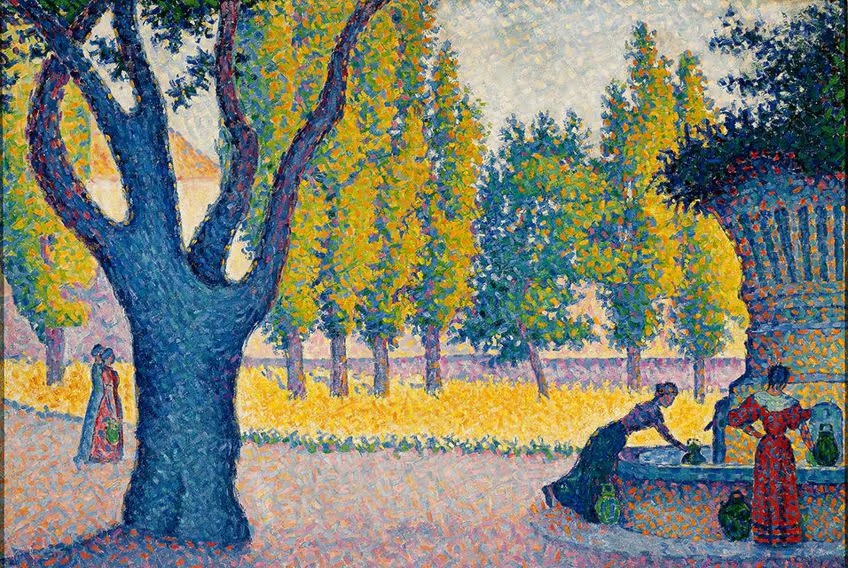The intriguing artistic movement known as pointillism first appeared in the late 19th century and is most closely linked to the paintings of well-known French painters Georges Seurat and Paul Signac. In pointillism, painters create images by applying tiny, discrete coloured dots in patterns. The artist blends the hues optically, using the viewer’s sight instead of a palette. When viewed from a distance, this approach produces bright and dazzling compositions with colours that seem even more robust and lively.
A pointillist piece of art requires meticulous design and execution. To construct their image, artists usually start with a meticulous drawing of their subject and then methodically add paint dots, layer by layer. The dots’ size, spacing, and colour are essential for the desired effect. Artists can use a variety of instruments, including brushes, pencils, and even the tip of a paint tube, to achieve diverse effects.

The scientific ideas of colour perception that were popular in the late 19th century, especially those of physicist Ogden Rood and chemist Michel Eugène Chevreul, impacted pointillism. According to these beliefs, when viewed from a distance, the human eye would merge small, discrete spots of colour, giving the impression of continuous tones and hues. While pointillism is primarily associated with Georges Seurat and Paul Signac, other artists, like Vincent van Gogh and Camille Pissarro, also dabbled in the style to differing degrees. Even while pointillism as a unique movement faded in the early 20th century, its influence persisted and is still apparent in contemporary art movements like neo-impressionism and fauvism.
Easy Pointillism Art
Simplifying the process to make it more approachable for novices or those seeking a quicker method is common in easy pointillism paintings. Begin with topics like fruit, flowers, or straightforward landscapes with simple shapes and forms. Steer clear of complicated issues with minute details. For a quicker and simpler method, utilise larger dots rather than the tiny, closely spaced dots used in classic pointillism. You can use your fingertip, a cotton swab, or the tip of a brush to apply the dots.
Before you add the dots to your canvas or paper, delicately outline your subject with a pencil. This aids in keeping placement and proportions consistent as you work. Start by using your selected colours to block in the basic shapes and formations. Then, more layers of dots were added to create depth and complexity progressively. To achieve different effects, adjust the distance between your dots. Smoother looks can be achieved with closer spacing, while texture and interest can be added with more significant gaps between the dots.
Pointillism Art For Kids
For children, pointillism may be an enjoyable and captivating artistic endeavour that lets them creatively experiment with colour, texture, and pattern. Give them basic art supplies, such as paper, paint, crayons, and markers. For simple cleanup, use tempera paint or washable markers. Choose themes easily relatable to children, such as flowers, trees, animals, or abstract designs. Littler children benefit most from simple shapes and forms.
Teach children to make dots on paper by lightly pushing the tip of a paintbrush or marker onto the paper. Urge them to try various dot sizes and pressures to see how it impacts their artwork. Allow children to create designs and colour combinations using their imaginations. Pointillism gives artists great creative flexibility, inspiring them to play about and try out new concepts.
Pointillism Definition In Art
The creative technique known as pointillism involves applying small, distinct dots of colour in patterns to create an image. Rather than mixing colours on a palette or canvas, pointillist painters employ the viewer’s eye to blend the dots visually, giving the impression of flowing hues and tones. Artists like Georges Seurat and Paul Signac, who thought employing tiny dots of pure colour might generate a stronger sense of brilliance and vitality in their paintings, popularised this method in the late 1800s. Pointillism, frequently linked to the neo-impressionist movement, is distinguished by its exacting attention to detail and use of colour theory to produce stunning compositions.
Pointillism Abstract Art

The exacting dot method of pointillism and the non-representational, freeform quality of abstract art combine to create the intriguing hybrid known as pointillism abstract art. Artists employ the dotting technique in pointillism abstract art to produce compositions that may not explicitly depict identifiable objects or scenes but concentrate on expressing feelings, ideas, or merely aesthetic sensations.
Abstract pointillist painters employ tiny, discrete colour dots applied in patterns, just like traditional pointillism. These dots might not always form identifiable figures or shapes in abstract paintings. Instead, they add to the artwork’s overall texture, rhythm, and intensity. Abstract pointillist painters frequently use colour theory and composition to produce visually striking works. To elicit various emotions or feelings, they might experiment with contrasting or complementary colour schemes and the arrangement and density of dots.
Abstract pointillism places more emphasis on expression and abstraction than conventional pointillism does on high realism and detail. Without adhering to representational rules, artists can express feelings, investigate ideas, or appreciate the beauty of colour and form with the dotting technique. Pointillist abstract art encourages spectators to interact and interpret the piece for themselves. Without a clear subject, viewers can investigate the artwork’s visual components, textures, and rhythms, creating connections and interpretations.
Pointillism, a scientific eye

Pointillism was one of the most scientific methods that emerged in art creation. French chemist Michel Eugène Chevreul, who produced a book while looking into ways to increase the colour strength of hues for a Parisian tapestry company, greatly impacted the theory of Pointillism. Chevreul concluded that the tapestries’ visual impact was primarily due to optics and the juxtaposition of complementary colours, with the paintings that were created heavily influenced by Pointillism.
This incredibly detailed Neo-Impressionist style concentrated on optical illusion. Painters practised pointillism and eschewed loose, free-flowing brushstrokes in favour of precise, systematic painting. Before painters touched the paint, every Pointillism painting was meticulously designed, giving them a general idea of how their piece would turn out. Most Pointillism artwork was created with oil paint because of the technique’s intricacy and preference for thicker, non-running paint.
Art using pointillism is a tribute to the inventiveness and imagination of the creators of this unique medium. Pointillism, which first appeared in the late 19th century, was a precise painting technique based on the optical blending of tiny, individual dots of colour. It was a radical break from conventional painting procedures.
Pointillism, popularised by visionaries like Georges Seurat and Paul Signac, resulted in aesthetically striking artwork and caused colour theory and perception to be re-evaluated. Pointillist painters accurately captured light and mood in paintings by applying and arranging dots precisely to create a radiant look.





